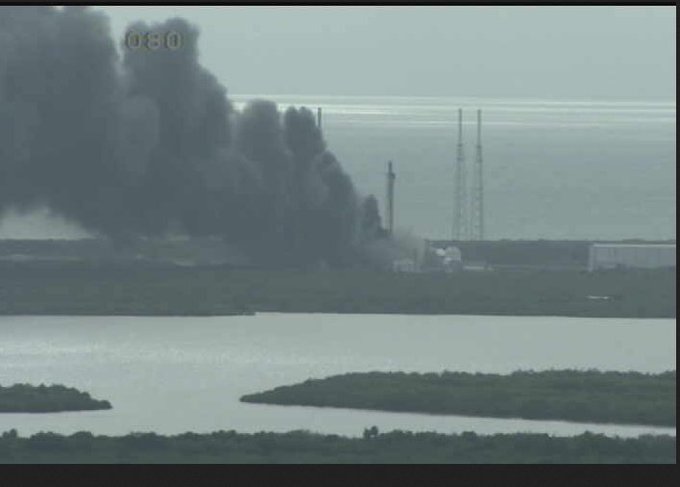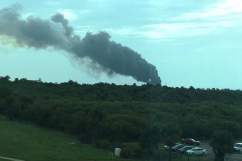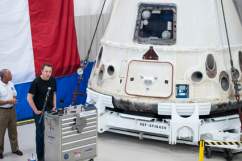A rocket carrying a $200 million Facebook satellite exploded into a massive fireball at a SpaceX launch site at Cape Canaveral, sending thick smoke into the air and shaking nearby buildings. You can watch video of the moment the SpaceX Falcon 9 rocket blew up above, courtesy of USLaunchReport.com.
No one was injured in the Thursday morning blast. Both the rocket and satellite were destroyed, said CNN.
CNN said the Facebook satellite was going to be used “to bring internet access to Africa, the Middle East, and Europe,” adding that Facebook has partnered with a French satellite company and the satellite, Amos 6, “was owned by Israeli company Spacecom.”
People posted videos of the explosion, with some writing on YouTube that it was setting off “Secondary explosions.” SpaceX says on its website that the company “designs, manufactures and launches advanced rockets and spacecraft.
The company was founded in 2002 to revolutionize space technology, with the ultimate goal of enabling people to live on other planets.” The company is owned by billionaire Elon Musk, says AP. The Los Angeles Times says “SpaceX’s reliability with the Falcon 9 is 93%, which is ‘right in the ballpark’ of the industry average of 95%.”
Zuckerberg expressed disappointment about the explosion on Facebook.
Musk tweeted later in the day:
The Associated Press said the explosion occurred around 9 a.m. on September 1 during a “routine test” at Cape Canaveral, which is near Kennedy Space Center. The AP said the blast occurred at Launch Complex 40.
The AP said there was no immediate word about whether anyone was injured, but added that the launch pad is usually cleared before such tests are conducted.
Kennedy Space Center said a SpaceX Falcon 9 rocket was scheduled to launch at 3 a.m. on September 3 “from Cape Canaveral Air Force Station carrying the AMOS-6 communications satellite for Spacecom of Israel. This satellite supports existing services in the Ku- and Ka-band for the Middle East, Europe and sub-Sahara Africa.”
News reporters said on Twitter that the explosion occurred at a test of a rocket. One wrote, “Black smoke after @SpaceX Falcon 9 explosion on launch pad at Cape Canaveral.” Photos showed plumes of black smoke filling the air.
You can watch live Kennedy Space Center video feeds here.
A television producer wrote on Twitter, “Explosion at SpaceX launch site in Cape Canaveral. SpaceX was conducting test firing of rocket when the blast occurred.”
The plume could be seen on radar.
According to Tech Crunch, “A SpaceX Falcon 9 rocket just exploded while resting on a launch pad at Cape Canaveral. This rocket was set to launch on Saturday, September 3 on a mission to deliver Facebook’s first satellite to orbit. The status of the payload is unknown at this time.” Gizmodo added, “Facebook reportedly had a deal with Spacecom to make use of their Amos 6 as part of their effort to increase worldwide internet connectivity.”
Computer World said Facebook was launching the satellite to “bring Internet connectivity to parts of sub-Saharan Africa.”
Tech Crunch quoted the Associated Press as saying the rocket blew up during a test.
“In 2012, SpaceX became the first commercial space company to rendezvous with the International Space Station utilizing Dragon and Falcon 9. Although these flights have not transported crew, SpaceX is working toward their goal of transporting astronauts to space in Crew Dragon,” said Kennedy Space Center.
The Space Center also said, “Falcon 9 is SpaceX’s two-stage rocket manufactured to successfully transport satellites and the Dragon spacecraft into orbit. Currently the only rocket fully designed and developed in the 21st century, Falcon 9 delivers payloads to space aboard the Dragon spacecraft or inside a composite fairing. With a minimal number of separation events and nine first-stage Merlin engines, the SpaceX Falcon 9 rocket is designed so that even if two of the engines shut down, the rocket can still operate.”




